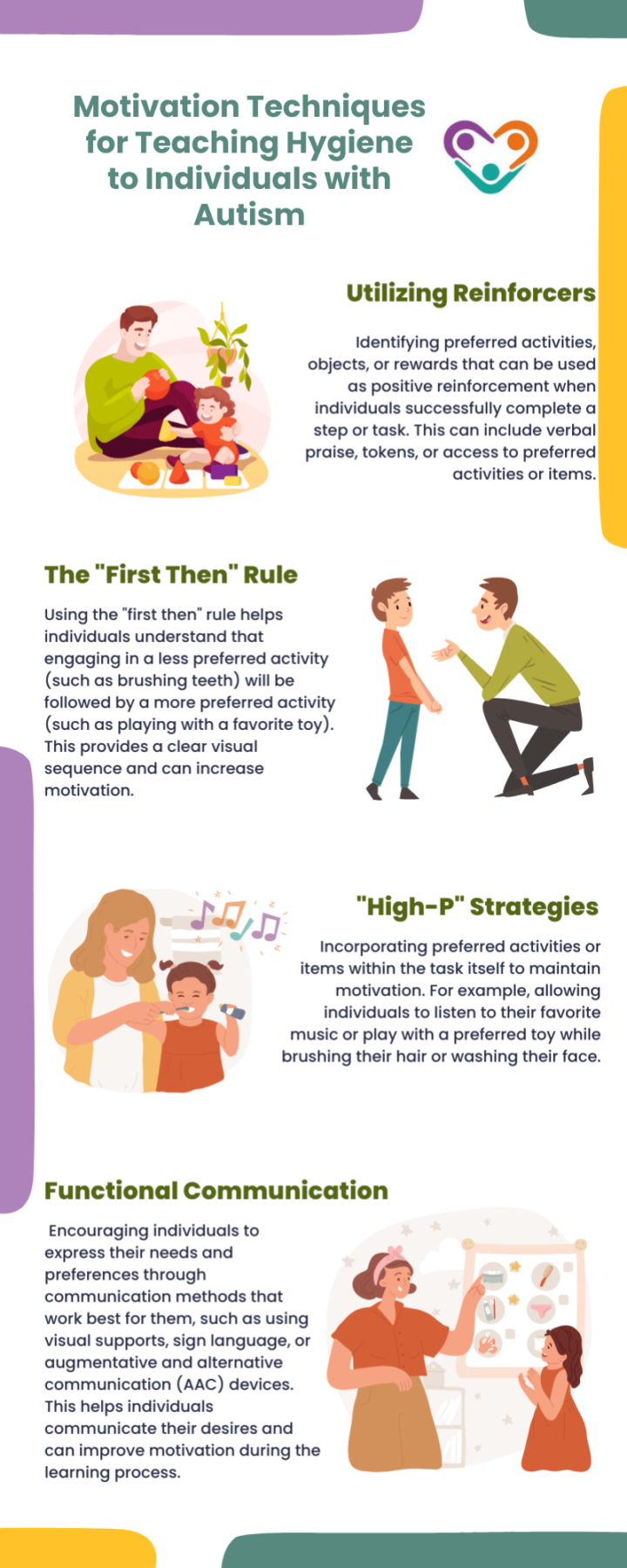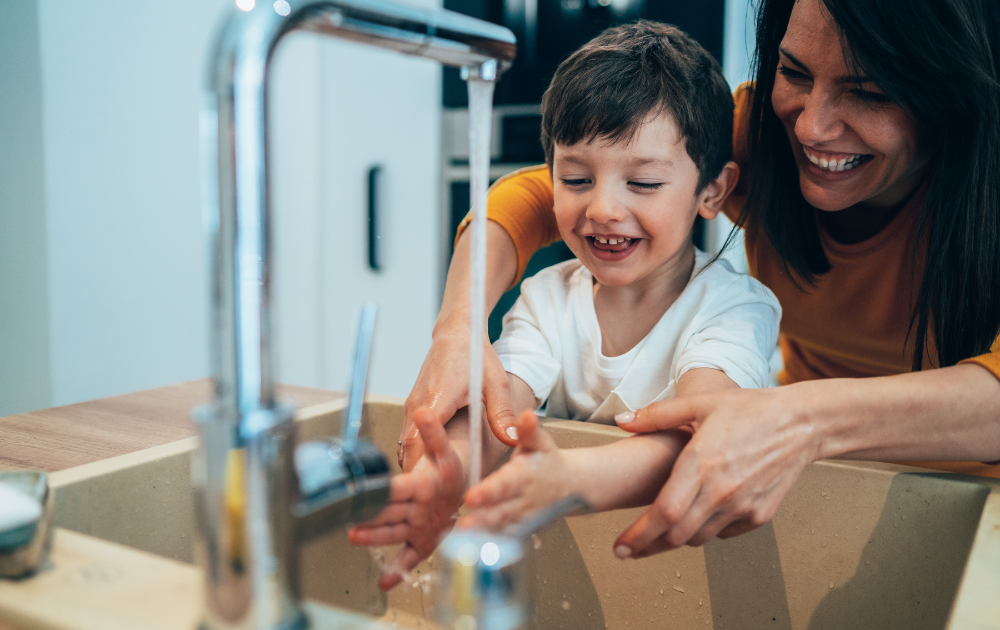Teaching personal hygiene to children with autism can be challenging but incredibly important. Good hygiene is not only about staying clean; it also helps children feel better about themselves and stay healthy.
For parents and caregivers, understanding the unique needs of autistic children is key to making this learning process smoother. To help with that, this guide will cover essential tips and strategies to help you teach personal hygiene effectively and with compassion.
Impact of Hygiene on an Individual’s Well-Being
Research suggests that teaching personal hygiene to individuals on the autism spectrum can significantly improve their overall well-being.
By learning and practicing proper hygiene habits, individuals can enhance their physical health, reduce the risk of infections and illnesses, and promote a sense of comfort and cleanliness.
In addition to physical benefits, maintaining good personal hygiene can also have a positive impact on social interactions. When individuals feel clean and fresh, it can boost their self-confidence and make them more comfortable in social settings.
Good personal hygiene can also help prevent unpleasant body odors, which can contribute to positive social experiences and relationships.
Effective Teaching Strategies
Teaching personal hygiene skills to individuals on the autism spectrum requires effective strategies that cater to their unique learning styles and needs. Some successful techniques include:
- Providing clear and explicit instructions about each step of the hygiene routine.
- Using visual stories or narratives to explain the importance of personal hygiene and the steps involved.
- Creating visual aids that outline the sequence of tasks and serve as reminders.
- Breaking down the skills into smaller steps and gradually teaching them in the appropriate sequence.
- Using rewards and positive reinforcement to motivate individuals to engage in personal hygiene practices.
- Using visual prompts to indicate the order of activities, such as “First brush teeth, then play.”
- Capitalizing on the individual’s high-interest activities or objects to increase motivation and engagement.
- Teaching individuals how to communicate their needs and preferences related to personal hygiene.
Employing these strategies and tailoring them to the individual’s strengths and preferences will allow caregivers and educators to effectively teach personal hygiene skills to individuals on the autism spectrum.
How to Teach Personal Hygiene Skills to Autistic Individuals
Teaching personal hygiene skills to individuals on the autism spectrum can be accomplished by breaking down complex tasks into smaller, more manageable steps. This approach, known as task analysis, allows for a systematic and structured teaching method.
For example, when teaching showering skills, the steps may include undressing, adjusting water temperature, applying soap, rinsing, and dressing.
Breaking down the task into smaller steps helps autistic individuals focus on mastering each component before moving on to the next. Visual aids, such as picture sequences or checklists, can be used to reinforce understanding and provide a visual reference for each step.
This helps promote independence and build confidence as they progress through the skill.
Apart from that, motivation also plays a crucial role in teaching personal hygiene skills to individuals on the autism spectrum. Finding what motivates each individual is essential for engagement and progress.
Some effective motivation techniques include:

Teaching personal hygiene skills to individuals on the autism spectrum requires a patient and individualized approach. Doing so allows individuals to develop essential personal hygiene skills, gain independence, and improve their overall well-being.
Establishing Routines for Personal Hygiene
Establishing routines is also a key factor in promoting consistency and independence among autistic individuals. This involves creating structured morning and evening routines so autistic individuals can develop a sense of predictability and navigate their personal hygiene tasks more effectively.
Creating a morning schedule can help individuals on the autism spectrum start their day on the right track. This schedule should outline the specific tasks and activities that need to be completed, providing a clear roadmap for their morning routine.
Here are some important aspects to consider when establishing a morning schedule:
- Waking Up: Set a consistent wake-up time to establish a regular routine.
- Bathroom Routine: Include tasks such as using the toilet, washing hands, and brushing teeth.
- Dressing and Grooming: Outline the steps involved in getting dressed, combing hair, and other grooming activities.
- Breakfast: Allocate time for preparing and consuming a healthy breakfast.
- Packing Belongings: If necessary, include time for packing bags and gathering necessary items.
Breaking down the morning routine into manageable steps helps autistic individuals follow a structured plan that promotes independence and reduces anxiety.
Similar to the morning schedule, establishing an evening routine is crucial for individuals on the autism spectrum. This routine should aim to wind down the day and prepare for a restful night’s sleep.
Here are some key elements to consider:
- Dinner: Allocate time for dinner preparation and eating.
- Personal Hygiene Tasks: Include tasks such as bathing, brushing teeth, and using the toilet.
- Relaxation Activities: Incorporate activities such as reading, listening to calming music, or engaging in sensory-based activities.
- Bedtime Routine: Outline the steps involved in getting ready for bed, such as changing into pajamas and setting up a comfortable sleep environment.
- Bedtime: Set a consistent bedtime to ensure individuals with autism get an adequate amount of sleep.
Establishing consistent morning and evening routines provides individuals with autism with a sense of structure and predictability. These routines can be tailored to meet the individual’s specific needs and preferences.
Collaborating with parents, therapists, and specialists can provide valuable insights into individual needs and potential barriers. This ensures that the routines are designed to address the unique challenges faced by individuals on the autism spectrum.

Final Thoughts
Teaching personal hygiene to children with autism can be a rewarding journey. With patience, consistency, and a bit of creativity, you can help your child develop essential self-care skills that will last a lifetime.
Remember, every small step forward is a big victory. Celebrate those moments and stay positive.
You’re not just teaching hygiene; you’re building confidence and independence, one day at a time. That said, if you’re seeking additional support, Golden Care Therapy offers ABA services in New Jersey, Georgia, Indiana, and New York. Contact us today to book a consultation and learn how we can help.



